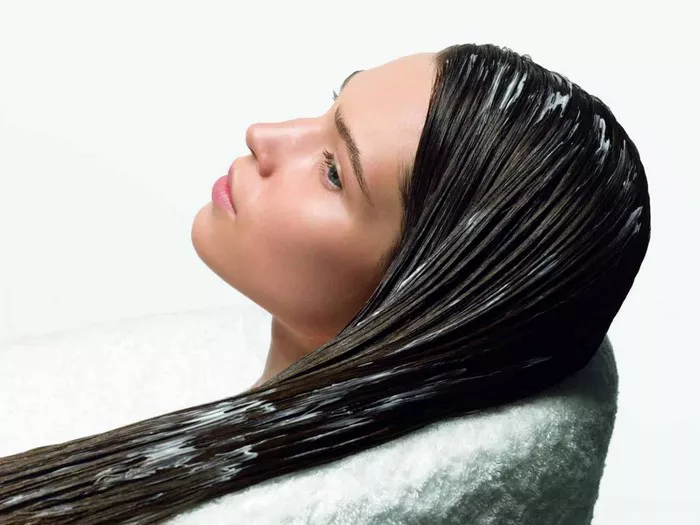Proper hair washing is essential for maintaining a healthy scalp and hair. One common question many people have is about the appropriate duration for which shampoo should be left in the hair. This article provides a detailed examination of the optimal time for shampoo application, considering various factors such as hair type, scalp condition, and product formulation. By understanding these nuances, you can achieve the best results from your hair care routine.
Understanding Shampoo and Its Function
To determine how long shampoo should be left in your hair, it’s crucial to understand its role. Shampoo is designed to cleanse the scalp and hair by removing dirt, oil, and product buildup. Most shampoos contain surfactants, which are cleansing agents that help lift impurities away from the hair shaft and scalp.
Surfactants: These compounds reduce surface tension, allowing water to mix with oils and dirt for easier removal.
Conditioning Agents: Some shampoos include conditioning agents to provide additional moisture and manageability during the washing process.
Active Ingredients: Shampoos may also contain active ingredients targeting specific scalp conditions or hair issues, such as dandruff or dryness.
Factors Influencing Shampoo Application Time
The time shampoo should remain in your hair can vary based on several factors:
Hair Type: Different hair types require different care. For example, fine or oily hair may benefit from shorter shampoo application times, while thick or dry hair might need longer.
Scalp Condition: If you have a specific scalp condition, such as dandruff or psoriasis, your shampoo may need to stay on the scalp longer to allow active ingredients to work effectively.
Shampoo Formulation: The type of shampoo you use can also influence how long it should be left in. Shampoos with strong clarifying agents might need a shorter application time to avoid over-drying, while therapeutic shampoos for scalp issues might require longer.
General Guidelines for Shampooing
To achieve the best results from your shampoo, follow these general guidelines:
Apply to Wet Hair: Always start with wet hair to help the shampoo spread evenly and lather effectively.
Massage Gently: Work the shampoo into your scalp and hair with your fingertips, using gentle circular motions. This helps lift dirt and oil while stimulating blood flow to the scalp.
Leave on for 1-3 Minutes: For most shampoos, leaving the product in your hair for 1-3 minutes is sufficient. This allows time for the surfactants to cleanse the hair and scalp without risking over-drying or irritation.
Rinse Thoroughly: Ensure you rinse your hair thoroughly to remove all shampoo residue, which can lead to buildup and potentially irritate the scalp.
Specific Considerations Based on Hair and Scalp Types
Oily Hair: If you have oily hair, you might find that a shorter application time (about 1 minute) is effective. This helps prevent excessive dryness while still removing excess oil.
Dry or Damaged Hair: For dry or damaged hair, you may benefit from leaving the shampoo on for a slightly longer period (up to 3 minutes) to allow moisturizing agents to work. However, be cautious with this approach to avoid over-drying the scalp.
Curly or Coarse Hair: Curly or coarse hair often requires more moisture and can benefit from a longer application time. Consider using a hydrating shampoo and leaving it in for a couple of minutes to help enhance manageability.
Sensitive Scalp: If you have a sensitive scalp, use a mild, sulfate-free shampoo and leave it in for a shorter time (around 1-2 minutes) to minimize irritation.
Special Considerations for Therapeutic Shampoos
Therapeutic shampoos designed for specific scalp conditions may have different application guidelines:
Dandruff Shampoos: Shampoos containing anti-fungal or anti-dandruff agents often need to be left on the scalp for 5-10 minutes to effectively treat dandruff. Follow the product instructions for optimal results.
Anti-Itch Shampoos: Shampoos formulated to relieve itching or irritation should also be left on for a longer period, as directed by the manufacturer.
Clarifying Shampoos: Clarifying shampoos, which are used to remove product buildup, should be used sparingly and typically left on for a shorter time to avoid stripping natural oils.
See also: 14 Best Hair Fall Control Foods for Healthy Hair
Common Mistakes to Avoid
Avoid these common mistakes to ensure effective shampooing:
Overusing Shampoo: Using too much shampoo can lead to excessive drying and product buildup. A quarter-sized amount is usually sufficient for most people.
Not Rinsing Thoroughly: Inadequate rinsing can leave shampoo residue, leading to scalp irritation and buildup. Ensure all shampoo is thoroughly rinsed out.
Using Hot Water: Hot water can strip the scalp and hair of natural oils. Use lukewarm water for washing and rinsing your hair.
How to Optimize Your Hair Care Routine
For optimal hair health, integrate the following practices into your routine:
Regular Washing: Wash your hair regularly based on your hair type and lifestyle. Overwashing can strip natural oils, while infrequent washing can lead to buildup and scalp issues.
Conditioning: Follow up with a conditioner suited to your hair type to maintain moisture and manageability.
Avoid Over-Shampooing: Don’t shampoo more than necessary, as overuse can lead to dryness and scalp irritation.
Professional Recommendations
For personalized advice, consider consulting with a dermatologist or a trichologist, especially if you have specific scalp issues or persistent hair problems. They can provide tailored recommendations based on your individual needs.
Conclusion
The duration for which shampoo should remain in your hair can vary based on several factors, including hair type, scalp condition, and shampoo formulation. Generally, leaving shampoo in your hair for 1-3 minutes is adequate for most situations. Adjust the time based on your specific needs and the type of shampoo you use to achieve the best results. By following these guidelines and avoiding common mistakes, you can maintain a healthy scalp and hair, ensuring your cleansing routine supports overall hair health.


